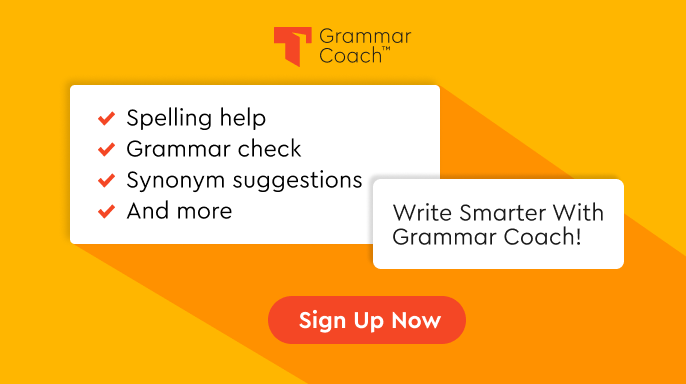Verbs are an important part of English as they are the only parts of speech that can perform the job of a predicate of a sentence. When we think of verbs, we usually think of single words like walk, eat, go, or give. However, verbs can get a lot fancier than that. For example, we could mash two words together to create verbs like overestimate or moonwalk. Or we can use multiple words together as a single verb as in push back or dig into. We even have hyphenated verbs like gift-wrap or table-hop. These fancy-looking verbs are all different types of compound verbs.
What is a compound verb?
Typically, a compound verb is defined as a verb that consists of multiple words combined together. Compound verbs can take the form of: a single word as in backslide or sidestep; a multiple word phrase as in open up or turn back; or multiple words connected by a hyphen as in jump-start or double-click.
Although they may look unusual, compound verbs are still verbs. This means they can act as a predicate, can be modified by adverbs, and must follow all of the same rules that verbs do. If you are having a little trouble with verbs, it might be a good idea to review our great explanation of what verbs are and how we use them.
✏️ List of compound verbs
The following list gives just some examples of the many compound verbs we use:
- act up, blindside, crack down, double-dip, ease off, face down, get up, hand over, iron out, join together, kill off, leave behind, move up, overachieve, punch up, quiet down, redshirt, stick to, thin out, undercut, video call, watch for, yield to, zigzag
Four types of compound verbs
While it depends on the exact grammar resource you use, compound verbs are often divided into four main types.
Prepositional verbs
Prepositional verbs are compound verbs that are a combination of a verb and a preposition. Unlike the next type of verb we’ll look at, prepositional verbs often keep the literal meanings of the individual words that combine to form them. For example, the verb talk means to speak with someone and the preposition to can refer to direction or connection. The prepositional verb talk to means to speak with someone, so both the literal meanings of talk and to are retained.
Again unlike our next type of verb, prepositional verbs typically do not separate out and are usually followed by an object. For example, we would say I laughed at the funny clown but we would not say I laughed the funny clown at.
Crack the code of prepositional phrases right here.
Phrasal verbs
Phrasal verbs are compound verbs that combine a verb with another part of speech, usually an adverb or a preposition. Unlike prepositional verbs, phrasal verbs often have idiomatic meanings that are different from the individual words used to form them. For example, the verb bring means to carry something somewhere and the adverb/preposition up often means “to a more elevated position.” However, the phrasal verb bring up means to raise a child, to raise a topic, or to vomit. The meaning of the compound verb is completely different from the individual parts.
Unlike prepositional verbs, it is possible for phrasal verbs to either be separable or inseparable. A separable phrasal verb can be split apart and still make grammatical sense while an inseparable phrasal verb cannot. For example, take back is separable as it is correct to say He took back his hat from the butler and He took his hat back from the butler. On the other hand, cut across is inseparable as the sentence We cut across the street makes sense but We cut the street across does not.
Unfortunately, there is no rule that says which phrasal verbs are separable or inseparable. You will simply need to remember them as you learn them.
Compound verbs with helping verbs
A third category of compound verbs consists of verbs that are combined with helping verbs, also known as auxiliary verbs. Examples of auxiliary verbs include be, have, do, can, could, might, may, and will. These words are placed before a main verb in order to form verb phrases that serve a variety of purposes. To give one example, the helping verb be is used to form the present continuous tense in the sentence I am eating lunch right now. As another example, the modal verb can is often used to express ability or permission as in Monkeys can climb trees.
Compound single-word verbs
The last type of compound verbs are compound single-word verbs. This broad type of compound verb is formed by combining a verb with another word (possibly even another verb) to form a new word with a distinct meaning. For example, the word double means “twice” or “twofold” and the verb check means “to verify” or “to inspect.” The verb double-check combines these two words to form a new word that means “to check twice.”
Compound single-word verbs come in two different forms: hyphenated and non-hyphenated. For example:
- Non-hyphenated: overestimate, proofread, blackmail, backflip, sugarcoat
- Hyphenated: baby-sit, dry-clean, flash-freeze, second-guess, bad-mouth
In order to know whether a compound verb uses a hyphen or not, you will need to consult a dictionary. If that is the case, you can never go wrong using our fantastic dictionary to look up a confusing compound verb.
Compound verb examples in sentences
Now that we’ve learned more about the different types of compound verbs, let’s look at a bunch of different examples of how we can use them in our sentences
- The airplane took off early in the morning.
- She dressed up for the fancy dinner party.
- Bill cleaned the mess up.
- We meant to go hiking yesterday but we were too busy.
- I was sleeping during the movie.
- By the time Scott arrives, his sister will have been studying for two hours.
- The prince was double-crossed by his cruel uncle.
- The pit crew supercharged the race car with a new type of fuel.
Compound verb best practices
For the most part, compound verbs aren’t much different from any other type of verb. As with other kinds of verbs, you want to make sure you follow proper grammar and that you adhere to subject-verb agreement. For example:
❌ Incorrect: The cats wakes up late every day.
✅ Correct: The cats wake up late every day.
Like other verbs, compound verbs can be modified by adverbs. When modifying a compound verb, it is usually best to put the adverb(s) immediately before the compound verb to avoid making a confusing or nonsensical sentence. For example:
Confusing: He could choke barely down the dry breakfast.
Clear: He could barely choke down the dry breakfast.
Choose the best verb with Grammar Coach
We aren’t your average spell check. Improve your writing with Thesaurus.com’s Grammar Coach™, which catches grammar and spelling errors and provides Thesaurus-powered synonym suggestions. Its Synonym Swap will find the best nouns, adjectives, and—of course, verbs—to help say what you really mean, guiding you toward clearer, stronger, writing. Start writing smarter today!














